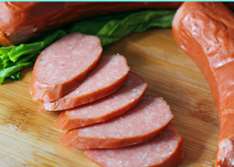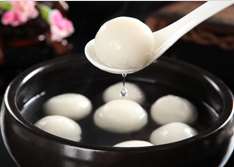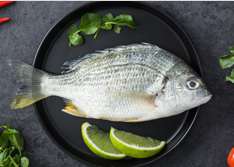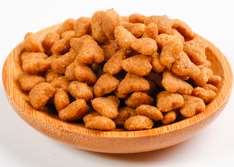The sodium content of dried noodles is beyond your imagination!
Release Time:2019-05-22 14:18:53
Hits:
With the increasing improvement of people's concept of keeping in good health (not counting an aunt in Hunan who injected juice into her blood vessels), the concept of low sodium diet has gradually become popular. Long-term high sodium intake will not only increase the risk of hypertension, but also may further cause cardiovascular and cerebrovascular related diseases. Long-term high salt intake can also cause gastric mucosa damage, extensive diffuse hyperemia, edema, erosion, ulcer and other pathological changes, and even induce gastric cancer.
Eating salt is the main way for our human body to take in sodium. The dietary guidelines for Chinese residents suggest that the daily intake of salt for adults should not exceed 6g. On the surface, it is actually very easy to solve. It's no big deal to use a salt-limited spoon, 2g for one spoon of salt, and just three spoons of salt a day for one person. But this is not the case. Many foods we eat contain high levels of salt (sodium). Such as soy sauce, monosodium glutamate, chicken essence, potato chips, etc. However, there are some foods that may not taste so salty, but by looking at the nutritional composition table, we can find that the sodium content is surprisingly high.
Noodles, for example, belong to this kind of food. Adding salt to the noodles can make the noodles whiter and brighter and is conducive to the noodles to be cooked quickly. In addition, the addition of sodium chloride and sodium carbonate (edible alkali) into noodles will make the taste of noodles more smooth and beneficial to improving the quality of noodles.
For fine dried noodles added with salt and alkali, according to the nutrient composition table, the sodium content can generally reach 1200 mg/100g (400 mg sodium is about 1g salt). According to this calculation, the salt content of a bowl of noodles without any seasoning (about 22 noodles) accounts for more than half of people's salt consumption throughout the day. For some fine dried noodles with salt and no alkali, the salt content is similar to that of potato chips.
Therefore, when choosing fine dried noodles next time, you should remember to look at the nutrition composition table of fine dried noodles and try to choose those with low sodium content. Sodium carbonate (edible alkali) added to fine dried noodles will improve the taste of noodles, but it will destroy the nutritional ingredients in flour and reduce the nutritional value of fine dried noodles. Therefore, products without sodium carbonate (edible alkali) should be purchased as far as possible.










.jpg)
.jpg)
.jpg)
.jpg)
